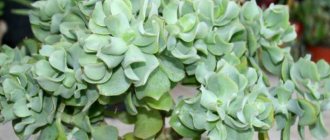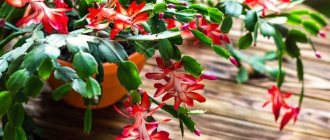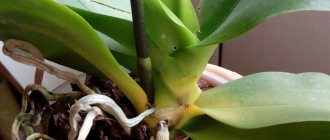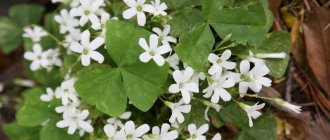- March 24, 2019
- Flowers
- Natali Michaelis
Heliotrope is a herbaceous perennial plant that came to Russia several centuries ago. Lovers of indoor flowers especially appreciate it for its subtle aroma and decorative appearance. Caring for and planting Marin heliotrope (photos will be given in the article) is not overly complicated, so even an inexperienced gardener can cope with the task of growing it. Read about all the nuances that a flora lover will encounter in our article.
Features of the variety and description
Heliotrope Marin is a tree-like shrub, the height of which often reaches half a meter. The leaves are arranged alternately on short cuttings, which is why the crop has a rather lush shape. Small flowers of rich blue-violet color are collected in inflorescences in the form of corymbs. The plant is also characterized by the presence of fruits, which consist of four parts - nuts. These parts can contain up to one and a half thousand seeds, the total weight of which is only 1 gram.
The first flowering of indoor crops can occur in the same year as sowing. The buds begin to set in early June and open after about a week. With proper care, the flowering period lasts until the cold weather. Perhaps it is precisely because of this that the perennial heliotrope Marin is so loved by gardeners. However, without proper care, the plant may die, so let's look at the basic rules for growing it.
https://youtu.be/oXS29maP4Mw
Growth conditions and types of reproduction
In the practice of floriculture, heliotropes were grown for quite a long time by cuttings, which made it possible to preserve the decorative features of the mother plant. Until recently, the use of seeds was considered to be of little effectiveness, especially considering the long growing season of this crop. So, from the moment of sowing until the emergence of seedlings, about twenty-five days pass, and after germination and before the start of flowering - up to one hundred days. Thus, without appropriate additional lighting and the creation of greenhouse conditions, it is quite difficult to grow heliotrope from seeds, even using rapidly developing varieties.
On the other hand, the seed propagation method, subject to growth conditions, is the most accessible.
Light soils are suitable for planting heliotrope; for example, you can take a classic soil mixture for indoor flowers or mix peat (four parts) and river sand (one part).
The optimal temperature for seedling growth is about twenty-two degrees Celsius. For an adult plant, the average daily temperature should be about twenty degrees Celsius.
Choose a site in the garden that is well lit, but with variable shade, since direct rays of the sun can negatively affect the decorative effect of the flower.
Choosing a landing site
Heliotrope Marin is very demanding in terms of lighting, so it is worth choosing a place that is illuminated by the sun most of the day. The best option for growing is a terrace or balcony with large windows. Also, all heliotropes can be grown outside in flower beds. They are often used to form borders, which not only look very impressive, but also smell pleasant. However, when planting in open ground, it is recommended to protect the area from rain and strong winds. It is best to plant the plant under polycarbonate canopies, avoiding places near the corners of buildings, as they often experience strong drafts.
Nuances of cultivation
Marin heliotrope flowers are very delicate. When water gets on them, they quickly wither, so it is recommended to water the plants at the root. It is worth noting that this type of heliotrope, as we have already mentioned, is capable of propagation by seeds. However, in terms of odor intensity, it is significantly inferior to those varieties that are propagated only by cuttings.
Tree heliotrope is popular because of its appearance. But there is always a risk of a tall bush turning into a ground cover plant. Therefore, gardeners sometimes have to tie them up. Marin is suitable for growing not only indoors, but also outdoors.
Planting seedlings in open ground
Planting heliotrope Marina in open ground should be done in the spring, as soon as the night frosts stop. Try to do this before the end of May, otherwise the plant will devote most of its energy not to rooting, but to the formation of buds. If the plant needs to be planted in summer or autumn, then you will first need to trim off all opened and unopened flowers.
It is also recommended to prepare seedlings for planting in open ground. To do this, the pot with the flower must be taken outside at night for several days. The hardening procedure will speed up the rooting process, but it is only allowed if the likelihood of sudden night and morning frosts is minimized.
When planting, you should maintain a distance of 20-30 centimeters between neighboring seedlings. It is also strongly recommended to place humus or leaves in the holes. This will allow you to enrich the soil with organic matter and not have to worry about fertilizing for the first year. In the first week after planting, the soil must be moistened daily by spraying, since watering from a watering can can harm the roots.
Propagation by cuttings
Initially, heliotropes (photo shown in the article) were propagated only by cuttings. But with the development of steel breeding, new varieties appear that can also be propagated by seeds. Among them, it is worth highlighting such a variety of heliotropes as Marin.
If you plan to propagate it by cuttings, then the mother plant must be dug out of the ground and, together with a lump of soil, placed in a container and brought indoors for the winter. Water the crop as needed. In mid-February, cuttings are formed from the mother plant. They are divided in such a way that each shoot has three to four internodes. You should not leave too much foliage on the cuttings, as this weakens the plant.
Next, prepare the containers for planting. The boxes are filled with a mixture of humus and sand in a ratio of 2:1. A layer of sand up to one centimeter thick is poured on top. The resulting substrate must be well moistened and compacted. Before planting, it is advisable to keep the cuttings in any solution for root formation.
After planting the workpieces in the substrate from above, the shoots are covered with film until roots appear. Every day the cuttings must be watered and ventilated for 30 minutes, opening the film. Typically, it takes about three weeks to receive the roots. Then the cuttings are transplanted into more nutritious soil. For example, you can make a substrate from sand, turf and peat in a ratio of 1:2:4.
The soil can be fertilized with complex fertilizer. At first, the plant needs to be shaded. It is also worth spraying them up to twice a day. To do this, use water whose temperature is above room temperature. As young plants grow, they need to be regularly pinched to give them a more decorative appearance. Seedlings can be transplanted into open ground only after the frosts have stopped.
Caring for an adult plant
Judging by the reviews, Marin heliotrope is a fairly unpretentious crop only in the adult phase. If you manage to keep the plant in good health for a year after planting, then further care for it will not be difficult. It will be enough to moisten the soil in a timely manner, take care of additional shading on hot summer days, cover the flower for the winter and fertilize the soil with organic and mineral fertilizers. We will examine all these nuances in more detail in the following sections.
What does heliotrope look like?
The name of this plant consists of two parts, translated from Greek they mean “sun” and “turn”. This best characterizes heliotrope - during daylight hours its flowers change position, following the sun.
The photo of heliotropes may seem familiar to you. This plant is often mistaken for lilac, which is popular in our latitudes. Heliotrope is also a lush shrub, densely strewn with collections of bright purple inflorescences. However, it has nothing in common with our lilacs.
The bush itself can reach about 60 centimeters in height, and the dome of inflorescences most often has 20 centimeters in diameter. In addition to the most common purple hue, inflorescences can also be blue, blue, lilac and even white. The petals have a soft velvety texture. The inflorescences are located very close to each other.
Watering
Adult heliotrope Marin (photo below) does not require frequent watering. It is worth noting that the plant tolerates drought much easier than excess moisture. Even on summer days, various fungal infections can occur in the ground, affecting the root system of the plant, so you should water the heliotrope only when a dry crust, at least two centimeters thick, appears on the soil around it. Water is poured under the root using a watering can with a rain nozzle. It is strongly recommended to avoid getting the buds wet in hot weather.
As for a houseplant, watering will not be much different from a soil crop. It is necessary to monitor the condition of the substrate in the pot and water the flower only when a dry crust forms on top. You can use a wooden stick or your finger to test the moisture. Also, you should not allow moisture to remain in the pan, as this can provoke the development of various diseases. It is also recommended to place a drainage layer consisting of broken bricks or stones at the bottom of the pot when replanting, so that air can easily penetrate to the roots.
Growing heliotrope at home: features of planting and care
If you create growing conditions for heliotrope that are close to those to which it is accustomed in the wild, it will grow and bloom well in an ordinary apartment.
Lighting
Due to its origin, heliotrope loves light very much. At the same time, it easily tolerates direct sunlight. Therefore, it can be located both in the east or west of the room, and in the south. Of course, on particularly hot days you need to make sure that he doesn’t get sunburn. It is not recommended to place a pot of heliotrope on a northern windowsill; the plant will develop poorly and may even die.
Air temperature and humidity
Heliotrope is a plant that loves heat, so in the warm season it is grown at air temperatures from twenty-two to twenty-five degrees. In winter, it is advisable to move it to a place with a temperature of about sixteen degrees so that it enters a state of relative rest.
Watering and fertilizing
In spring and summer, heliotrope is watered regularly and abundantly; the soil should always be slightly moist. Holes should be made at the bottom of the pot and a good layer of drainage should be placed in it so that excess water easily drains into the pan and does not form stagnant moisture in the soil. With severe waterlogging, heliotrope roots are quickly affected by rot. And when the soil dries out for a long time, the plant sheds its leaves. With the onset of autumn, the number of waterings should be reduced and carried out as the soil dries.
The soil
The soil for heliotrope should be nutritious and light. If you compile it yourself, you can use the following proportions:
- Turf land - four parts;
- Leaf soil - two parts;
- Peat - two parts;
- Coarse sand - one part;
- Charcoal - one part.
It is advisable to heat the resulting soil mixture in the oven or place it in the microwave for a few minutes.
Transfer
It is recommended to replant heliotrope every year in the spring. To do this, you need to remove it from the old container and remove the damaged roots. Fill a pot with a slightly larger diameter with a drainage layer and nutrient soil. Replant the plant, moisten it and pinch out all shoots.
Top dressing
If we are talking about a houseplant, then the first feeding should be carried out 12 days after transplanting the flower from the transport pot. After this, the procedure is repeated annually two weeks after the start of mass flowering. Remember that a lack of nutrition does not affect the health of a plant as much as its excess. Even the slightest error in proportions can lead to the death of the flower.
As for the ground plant, the initial feeding in the form of humus should be enough for a whole year. In the future, it is necessary to fertilize the soil with special organic and mineral fertilizers, which can be purchased at any flower shop. An alternative option is cow manure diluted in rainwater in a ratio of 1:10.
What are the types
There are about 300 species of heliotrope in the world, but, unfortunately, most of them are considered poisonous. There are not many decorative species that can decorate a garden:
Peruvian. They are considered the most common, loved by flower growers for the extraordinary brightness of the inflorescences and quite long flowering. Among the Peruvian heliotropes, the following subspecies are especially popular:
- Princess Marin
- Marine Blue
- Mini Marine
Stem-encompassing. Distinguished by its short stature.
Acute litmus dye. It has the largest inflorescences and average height.
Common diseases
Most often, plants grown in open ground conditions are subject to such misfortunes. Most diseases are directly related to improper plant care, for example, excessive watering. If a flower is affected by root rot, it will be almost impossible to save it. The only option is to cut off the affected roots of the flower and replant it in a new location.
You should also be wary of the appearance of brown spots on the leaves - a clear sign of powdery mildew. The development of the disease is provoked by cold drops of rain or morning dew, which do not dry out for a long time. You can get rid of the disease using the drug “Fitosparin” by spraying the leaf or applying the solution at the root.
List of pests
Houseplants are rarely affected by pests. Most often this happens after a diseased plant is brought into the house. Insects move from one flower to another and begin to reproduce in a new environment. In this case, you should immediately create a quarantine zone for diseased plants in a separate room and begin a “course of treatment.” Here is a list of the most common pests and how to combat them:
- aphids - repeated treatment with any insecticidal preparation;
- spider mite - covering a flower with a bag of cigarette smoke;
- whitefly - treating flower leaves with green soap.
If the soil crop has been affected by pests, then it will be possible to cope with the scourge exclusively with insecticidal agents. Moreover, the treatment should be carried out on a windless day at sunset or dawn, so that the substance remains on the parts of the plant for as long as possible. Various folk remedies for controlling insects in open ground will most likely be useless, but they can be combined with chemical treatment.
Beneficial features
Some types of heliotrope are considered an excellent remedy against helminths. For prevention, take a decoction of its dried leaves.
Heliotrope also has a beneficial effect on the kidneys and the functioning of the prostate gland. The plant also has good healing properties and an anti-influenza effect. It is used in the treatment of lichen, warts and wound healing.
However, as much as this plant can be useful, it can also be dangerous. Most species are considered poisonous, so growing the plant for medicinal purposes yourself is unacceptable. Before using it as a medicine, you should consult with specialists.
Heliotrope seedlings will quickly turn into beautiful, weighty bushes with noble flowers. They will be an excellent decoration for a garden or local area and will delight you with their appearance for many years.
Seed planting technology
Unlike other varieties, heliotrope Marin can only be propagated generatively. Cuttings and dividing the bush will not bring absolutely any results. Therefore, let's look at the main stages of growing Marin heliotrope from seeds.
- We prepare the ground. To do this, it will be enough to purchase a ready-made substrate for heliotropes at a flower shop. It is highly not recommended to prepare the soil yourself, since the flower is very picky about its composition.
- Plant the seeds in cups. In this case, you should not bury the seed more than 5 millimeters from the surface. Otherwise, the sprouts simply will not have enough strength to break through the soil layer.
- We're making a greenhouse. After watering the substrate, it is recommended to additionally cover the cups with polyethylene or glass to create a greenhouse effect (do not forget about daily ventilation).
The percentage of germination directly depends on the quality of the seed, but the first shoots, as a rule, appear a month or two after planting. Further care is no different from the rules described above.
Propagation by seeds
Heliotrope can also be propagated by seeds. They can be sown from January to March. To obtain seedlings, it is recommended to scatter the seeds over the surface of the soil and press them a little, without covering anything from above.
The germination period is twenty days. Containers with seedlings must be kept warm and certainly illuminated. Without light, seeds will not germinate.
Compatibility with other plants
In order for Marin heliotrope to feel as comfortable as possible in the open ground, it is necessary to follow the basic rules of the neighborhood. It is highly not recommended to plant the flower in areas where there are large trees, as they create unnecessary shading. But climbing roses or marigolds will be excellent neighbors for heliotrope, since they not only do not interfere with its normal growth, but also harmoniously combine with its appearance and aroma. You can also add garden geranium or petunia to the flowerbed to dilute the dazzling purple tone of heliotropes with another color. Wormwood and lavender can also help with this. However, do not forget that if one plant is damaged by pests, the insects will spread to neighboring plants.
Winter care
Most experienced gardeners recommend digging up a heliotrope bush for the winter to save its life. Before the first frost, the plant is transplanted into a large pot and placed on the sunniest windowsill.
In order for the flower to grow in comfortable conditions, the room temperature must be at least 15 degrees. If the room where the heliotrope is located does not have strong lighting, additional artificial light may be required.
Main problems when growing
In order to prevent the main mistakes that novice gardeners make when growing, we recommend that you familiarize yourself with the list of the main problems that arise most often when growing this flower.
- Withering of buds. A similar problem most often occurs after rain, since drops fall inside the inflorescence and remain there for quite a long time. If you want to avoid such a development of events on your site, then take care in advance to protect your plants from rain, for example, build a canopy from film or polycarbonate.
- Excessive spreading of bushes. A fairly common occurrence in the flowerbeds of novice gardeners. To form the volume of the plant, it is necessary to regularly tie up young branches using slats and nylon thread. Also, do not be afraid to trim off an excess shoot if it does not fit into the decorative appearance of the bush.
- Dry tips of leaves. A clear indicator of a lack of moisture in the soil, which most often manifests itself in the summer. It is recommended not only to water the crop in a timely manner, but also to take care of a source of additional shading. For example, you can use garden netting.
As you can see, growing heliotrope at home is not difficult if you know the basic rules for caring for this flower. If you follow the recommendations given above, the plant will definitely delight you with its decorative appearance and enchanting aroma.
Description of heliotrope Marine
The homeland of heliotrope is South America. In tropical and subtropical climates, the flower can delight its owners for many years. However, heliotrope is not able to survive the winter in the temperate continental climate zone, therefore in Russia the crop is grown mainly as an annual one.
A distinctive feature of the Marine variety is its rapid pace of development, allowing the plant to bloom in the first year after sowing
Heliotrope Peruvian Marin has a tree-like form and reaches 50 cm in height. In warm climates, the plant can grow up to 65-70 cm. The leaves are alternate with a wrinkled surface. Heliotrope Marin is distinguished by lush inflorescences that exude a subtle vanilla aroma. The culture is very unpretentious, but many gardeners have difficulties when propagating by seed.
Features of flowering
Marin heliotrope flowers have a corymbose shape and include many buds. Reach 20 cm in diameter. They have a bright violet-blue color. Flowering of Marin heliotrope begins a few months after planting the seeds. The first buds appear in June. Flowering is quite long and ends with the onset of frost.
The Marine variety is considered light-loving, but the scorching sun can cause the buds to burn out
Application in landscape design
Heliotrope Marin (pictured) is suitable for growing both in flower beds and at home. The optimal places for a flower are loggias, balconies and terraces. Decorative heliotrope Marin can be used to form flower beds and mixborders. Since indoor conditions are considered more preferable for the crop, it is much more common on window sills and balconies than in garden plots.
Pots must be placed on the sunny side, as Marin heliotrope prefers an abundance of light and warmth











